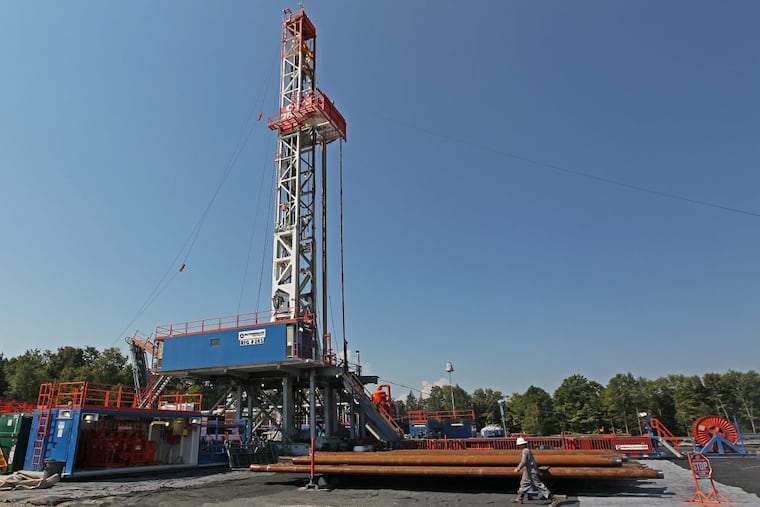Methane emissions from oil and gas sites 5 times higher than reported, says group
Almost 522,000 tons of methane, a greenhouse gas, are emitted by oil and gas operators yearly, the EDF contends. By comparison, only about 112,100 tons of methane get self-reported by the industry, the report states. Scientists say methane is a powerful contributor to climate change.

Pennsylvania's oil and gas well sites emit more than five times the methane that gets reported, according to a report released Thursday by the Environmental Defense Fund.
An estimated 522,000 tons of methane, a greenhouse gas, are emitted by oil and gas operators yearly, the EDF contends. By comparison, only about 112,100 tons are reported by the industry.
An industry trade group disputes the findings.
David Lyon, EDF's lead scientist on the project, said his group is not making any claim that the industry deliberately misleads state regulators.
Rather, Lyon said, the issue lies in the way the state Department of Environmental Protection collects its data. Methane emissions are self-reported by the industry and only include unconventional well sites — those produced by horizontal drilling and hydraulic fracturing, also known as fracking. In addition, the data submitted are largely based on engineering estimates — a standard practice. But it does not include actual monitoring of methane, Lyon said.
To generate the report, EDF placed monitors downwind from 35 unconventional and conventional well pads statewide as a representative sample. It then used a peer-reviewed scientific method to calculate overall estimates from those samples.
The bulk of the difference in uncounted methane emissions come from conventional well sites. At conventional sites, drills are run vertically to tap into pools of oil or gas. They tend to be older sites, Lyon says, and have higher methane loss rates.
"It's time to stop ignoring them," Lyon said of the conventional sites.
David Spigelmyer, president of the Marcellus Shale Coalition, disputed the report, saying it "is not based on any new research, relies instead on outdated emissions data," and "is an effort to drive a political agenda."
Rather, Spigelmyer said, data now supplied to regulators show methane emissions from unconventional natural gas developments are declining as production increases. He said the data are approved by both the EPA and DEP.
The Marcellus Shale Coalition says the industry itself is voluntarily trying new methods to detect leaks, such as use of an $85,000 infrared camera they can aim at flanges, valves and connectors to detect invisible, odorless methane. Often, leaks can be fixed quickly on the spot.
The Pennsylvania DEP is finalizing methane-reduction permits for new sources of emissions. They should be ready by March. The Wolf administration has not yet addressed rules for existing sources of oil and gas methane emissions.